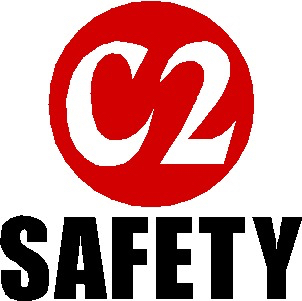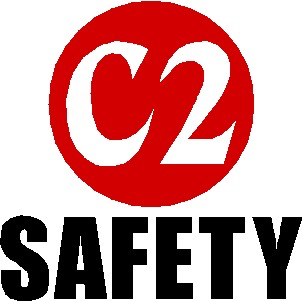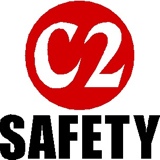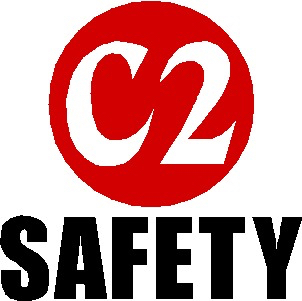Information
-
Document No.
-
Client / Site
-
Conducted on
-
Prepared by
-
Location
-
Personnel
-
Site Photo
Introduction
-
Legal requirements
The requirements of the Regulatory Reform (Fire Safety) Order 2005, which came into effect on 1 October 2006, adopt a self assessment approach to Fire Safety in the workplace. The legislation places certain duties on the ‘responsible person’ for the premises, one of which is to ensure that a suitable and sufficient fire risk assessment is carried out; when there are five or more staff employed this assessment should be recorded.
The assessment set out in this document is an evaluation of the Life Safety measures and is intended to satisfy the requirements of the Regulatory Reform (Fire Safety) Order 2005.
This fire risk assessment should be reviewed periodically and in the event of:
• Changes to the work activities or the way they are organised, including the introduction of
new equipment.
• Alterations to the building(s), including the internal layout.
• The introduction, change of use or increase in the storage of hazardous substances.
• The failure of fire precautions, e.g. fire detection and alarm systems or sprinkler systems.
• Significant changes to the type and quantity and/or method of storage of combustible materials.
• Significant changes in the occupancy levels.
• A significant change in the mobility level or other factors influencing the response of visitors or staff in an emergency.
• Changes to the management of the organisation.
Further guidance on the standards required within this risk assessment can be found on the ‘Fire safety law and guidance documents for business" web site. These are available as a free download from:
https://www.gov.uk/government/collections/fire-safety-law-and-guidance-documents-for-business
The guidance is designed for employees, managers and occupiers of businesses and will give guidance on how to comply with the fire safety order.
The Dangerous Substances and Explosive Atmospheres Regulations 2002 require specific risk assessment however are considered during the fire risk assessment process.
Control of Substances Hazardous to Health Regulations 2002 require specific risk assessment however are considered during the fire risk assessment process.
Action Plan
The action plan set out at the end of this document has been prepared in response to the significant findings of this fire risk assessment. As remedial actions are taken, evidence should be compiled and records kept showing who completed the remedial actions and the date. All actions should be signed off and dated when completed.
Type of Assessment
This assessment is carried out to satisfy the Regulatory Reform (Fire Safety) Order 2005 and is a Type 3 visual assessment of the common parts and all rooms.
The inspection of the building is visual non-invasive but where possible will seek to examine any cupboards and voids where safe to do so and so far as is reasonably practicable.
The assessment will also seek to identify the provision of an adequate fire alarm. Any general comments regarding furnishing standards has been included in the significant findings.
This assessment only considers the risk to life from fire to ensure compliance with fire safety legislation. The report does not address the risk to property or business continuity from fire.
The standard adopted for this Fire Risk Assessment is based upon the general guidance given in the Standards issued by Approved Document B of the Building Regulations
Emergency plans
You need to have an emergency plan for dealing with any fire situation.
The purpose of an emergency plan is to ensure that the people in your premises know what to do if there is a fire and that the premises can be safely evacuated.
Your emergency plan should be based on the outcome of your fire risk assessment and be available for residents, staff and other relevant persons such as the enforcing authority.
In simple premises the emergency plan may be no more than a fire action notice but whatever form the plan takes it must be communicated to and understood by all residents.
The emergency plan could include:
• how people will be warned if there is a fire;
• what residents, staff, visitors (including disabled) and contractors should do if they discover a fire;
• how the fire and rescue service and any other necessary services will be called and who will be responsible for doing this;
• how the evacuation of the premises should be carried out;
• where people should assemble after they have left the premises and procedures for checking whether the premises have been evacuated;
• arrangements for the safe evacuation of people identified as being especially at risk, such as young children and babies, those with disabilities, contractors, members of the public and visitors;
• contingency plans for when life safety systems, such as evacuation lifts, fire detection and warning systems, sprinklers or smoke control systems are out of order;
Maintenance Schedule & Relevant British Standards
Daily
• Fire alarm indicator panel for normal condition. BS5839-1
• Indicator lights in emergency lighting units.
• Electro-magnetic exit door systems BS7273-4
Weekly
• Fire alarms (Weekly testing) BS 58391 & 2
• Fire Extinguishers (Visual inspection) BS 5306-3
• Fire Blankets FIA Code of practice
• Automatic suppression systems (Fault Check) EN 12845, EN 15004
• Fire resisting door (magnetic holding devices), electric plugs, waste bins etc BS 7273-4
• Smoke control systems BS 9999, BS 7346-8
Monthly
• Emergency Lighting (activation test) BS 5266-8
• Fire alarm (if automatic generator is used) BS 5839-1
Quarterly
• Fire alarm BS 5839-1
• Any automatic fire suppression systems BS EN 12845, EN 15004, BS 5306-4
• Smoke Control Systems BS 9999, BS 7346-8
• 6 Monthly
• Fire Alarm BS5839-1
• Electro-magnetic door holders BS 7273-4
• Kitchen Extract Systems B&ES TR/19
Annually
• Fire alarm BS 5839-1
• Fire extinguishers BS 5306-3
• Escape lighting (Full duration (discharge) BS5266-8
• Fire blankets FIA code of practice
• Any automatic fire suppression systems BS EN 12845, EN 15004, BS9251
• Kitchen Suppression BS EN 16282-7
• Smoke control systems BS9999, BS 7346-8
• Lightning Protection Systems (11 or 13 months) BSEN 62305 for systems that post-date 1st September 2008 and BS 6651 prior
• Gas Installations (Gas Safe Registered Member) Gas Safety (Installation and Use) Regulations 1998 (Amended)
• Portable Appliance Testing (PAT) HSE Guidance
• Kitchen Extract Systems B&ES TR/19
5 Yearly
• Fire Extinguishers (extended Service) BS 5306-3
• Commercial fixed wiring installation test BS 7671
10 Yearly
• Carbon Dioxide Fire Extinguisher (Hydrostatic Test) BS 5306-3
• Residential fixed wiring installation test BS 7671
Management Considerations and Practices
-
Who is the person responsible for fire safety as defined in the Regulatory Reform (Fire Safety) Order 2005 ?
Fire Doors
-
FD30 doors should generally be no less than 44mm in thickness
FD60 doors should generally be no less than 54mm in thickness
The glazing has to be fire resisting to 30/60 minutes integrity meeting the requirements under BS 476-22:1987. Glazing should be marked with an acid etching giving the trade name in the corner of the pane and marked with the appropriate British Standard. Glazing that is marked with BS 6206:1981 or equivalent European standard is not fire resisting glazing and is provided for safety purposes only
Where self-closing devices are specified, standard overhead units should be used meeting BS EN 1154. Older closers may be tested to BS 6459-1 and it is recommended these are replaced. Note that the strength and features of the control must be correct for the size and use of the door fitted.
Hinges should be tested as part of the overall fire doorset. Refer to BS EN 1935:2002. Where a door is subject to repair as a result of this report, it is recommended the hinges are confirmed to be fitted with intumescent pads as part of the door upgrade.
In addition to intumescent strips, which are standard on most fire doors, most fire doors should be fitted with smoke seals. In general, all fire doors leading onto means of escape (such as protected corridors, stair-cores and protected lobbies) should be fitted with these seals.
Doors should be close fitting to the frame with a maximum gap of 4mm but 3mm is the usual working gap around the side and top of the door. The threshold gap at the bottom of the door may be a maximum of 10mm, but 8mm is the usual working gap. Smoke control door-sets should not have a threshold gap greater than 3mm (see BS 9999:2008 Section 33.1.7 for more information). -
Do fire doors have BWF-CERTIFIFIRE, Doorset Scheme or alternative certificate and Label on top edge?
-
Does the door leaf sit against the door stop and free from distortion?
-
If the door if veneered or lipped, is the glue still holding firmly inplace?
-
Is the door free from damage including dents and holes?
-
Is the door frame firmly attached to the wall?
-
If a planted door stop is present, is it firmly attached?
-
Is the frame to door leaf gap constantly between 3mm (Minimum) and 4mm (Maximum)?
-
Are intumescent seals in place
-
Are seals well attached inside the groove in the frame of door leaf?
-
Are seals free from damage and paint?
-
If fitted are smoke seals continuous around the frame or door leaf?
-
Is there a minimum of 3 hinges with all screws present?
-
Are screws used the correct size (filling the recess but not protruding or fouling with the hinge body)?
-
Are hinges free from metal fragments, oil leakage or other signs of wear?
-
Are hinges free from non-combustible packing?
-
Are self closers on fire doors in working order?

















